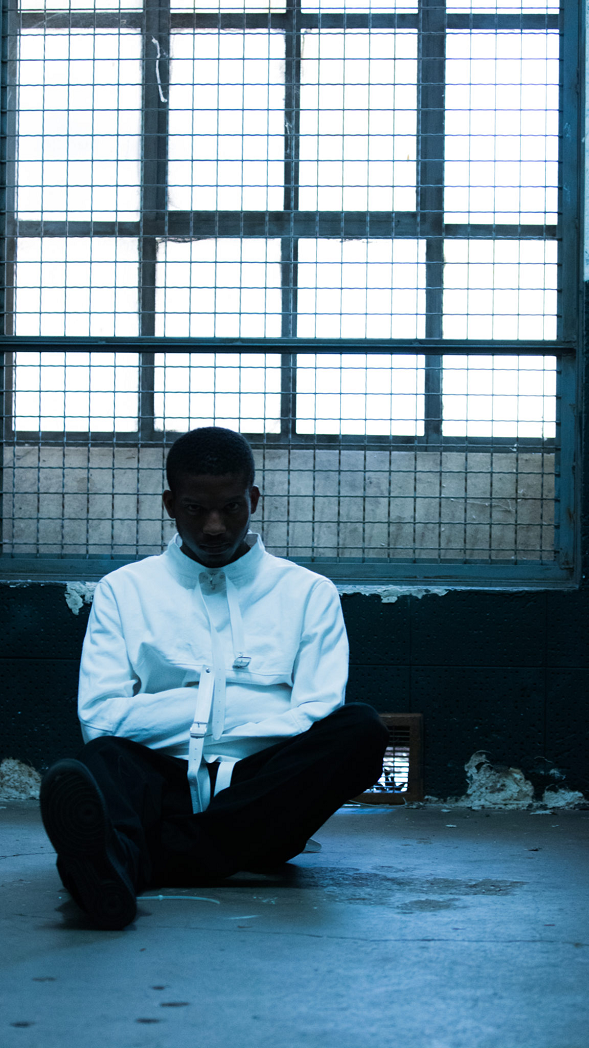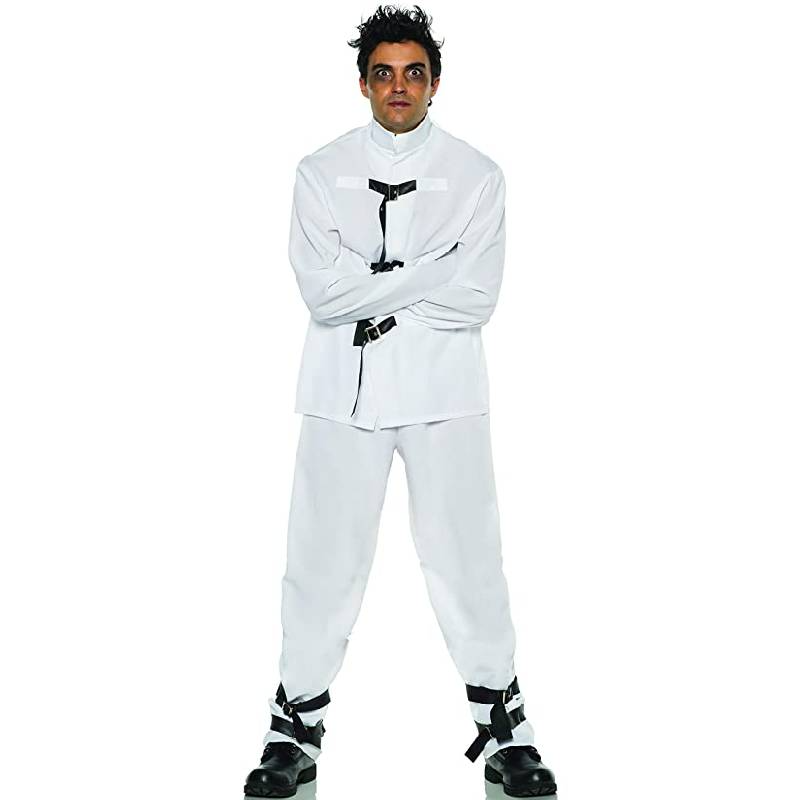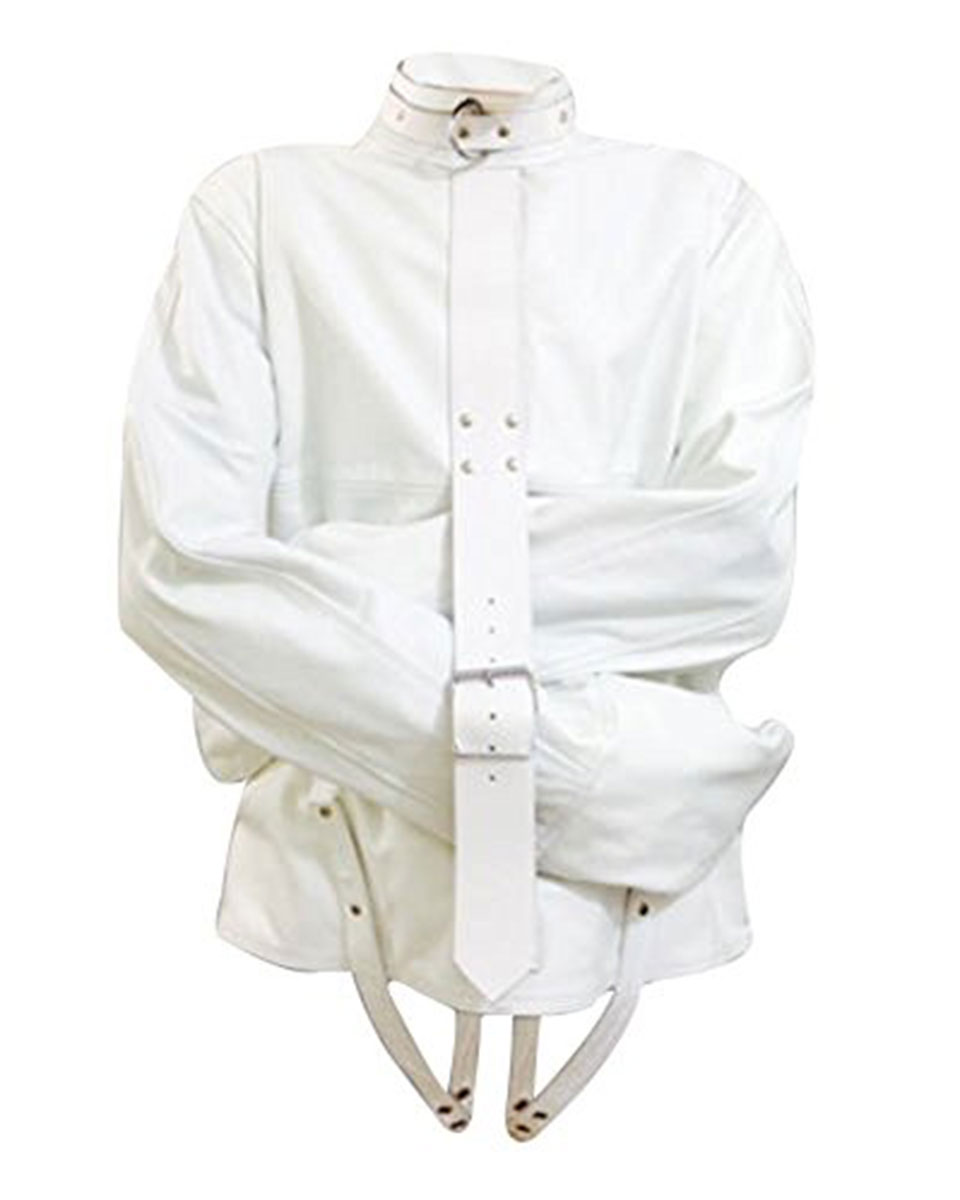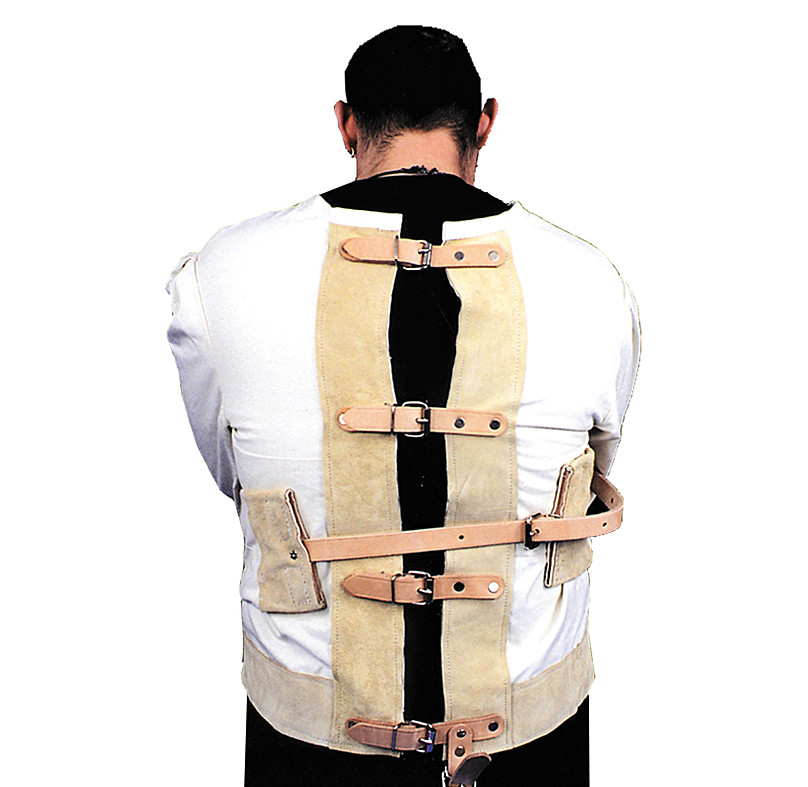Historical Unraveling: Origins and Early Usage
The strait jacket, a garment synonymous with restraint and often, has a history steeped in controversy and evolution. Originating in the early 19th century, its conception was rooted in the growing understanding of mental health and the need for humane methods of control during a time when asylums were overcrowded and treatment options limited. Unlike the crude shackles and chains of the past, the strait jacket was designed as a progressive tool, aiming to minimize harm while preventing self-injury or harm to others.

Its earliest iterations were made from heavy canvas or leather, with long sleeves that could be tied behind the wearer’s back, effectively limiting arm movement. This design aimed to provide a physical barrier against self-harm, a common concern in institutions dealing with patients experiencing severe mental distress. However, the strait jacket’s implementation was not without criticism; it symbolized control, sparking debates on patient dignity and the ethics of bodily restriction.
Mechanics and Variations: A Closer Look
Construction and Functionality
The standard strait jacket is a deceptively simple garment, constructed primarily from durable fabrics like canvas or, in more modern times, rip-stop nylon. It consists of a torso piece akin to a vest, often lined for comfort, with extended sleeves that can be secured via straps or buckles. These straps are ingeniously designed to allow arms to be crossed behind the back and fastened tightly, restricting mobility without causing direct injury when used correctly.
Variations exist to accommodate different needs and levels of restraint. Some incorporate quick-release mechanisms for emergency situations, while others feature additional padding to prevent skin irritation or injury during prolonged use. Specialized models for transport or high-risk situations may include additional restraints for the legs or a more secure fastening system.
Misconceptions and Reality
Despite its ominous reputation, the strait jacket is not intended as a punitive device but rather a safety measure. Misconceptions abound due to its portrayal in popular media, where it is often inaccurately shown as a tool of torture or punishment. In reality, its usage is strictly regulated and monitored within medical and correctional settings, employed only when absolutely necessary and under trained supervision.
Ethical Considerations: Balancing Safety and Dignity
Human Rights and Restraint
The use of strait jackets raises complex ethical questions surrounding the balance between safety and individual rights. The United Nations and various mental health organizations emphasize that any form of physical restraint should be a last resort, employed only when less restrictive measures have failed, and for the shortest duration possible. The preservation of human dignity, respect for autonomy, and the prevention of psychological trauma are paramount considerations.
Alternatives and Progress
Acknowledging the inherent limitations and potential for misuse, modern mental healthcare practices strive to minimize the use of physical restraints. Techniques such as de-escalation, therapeutic communication, and environmental modifications have proven effective in managing agitation without compromising patient dignity. Furthermore, the development of pharmacological interventions and behavioral therapies continues to reduce reliance on mechanical restraints like the strait jacket.
Cultural Significance and Symbolism
The strait jacket, also known as a straightjacket, holds a complex cultural significance and symbolism that transcends its original function as a medical restraint device. Primarily used in psychiatric hospitals during the 19th and 20th centuries to restrict the movement of patients deemed a danger to themselves or others, the strait jacket has evolved into a powerful metaphor in popular culture and art. Here are some key aspects of its cultural significance and symbolism:
Restriction and Control
At its core, the strait jacket symbolizes constraint and loss of freedom. It represents the ultimate form of physical control over an individual, reflecting societal fears and attitudes towards mental illness, particularly in historical contexts where mental health treatments were often inhumane.
Mental Health Stigma
In popular culture, the strait jacket is frequently used as a visual shorthand for madness or insanity. This imagery reinforces stigmatizing views of mental illness, reducing complex psychological conditions to a simplistic symbol of chaos and danger. However, it also sparks conversations about the history of mental health treatment and the need for more compassionate approaches.
Metaphor for Emotional Constraint
Beyond the literal, the strait jacket can symbolize emotional or psychological constraints. It may represent feelings of being trapped, overwhelmed, or unable to express oneself freely, resonating with individuals who feel suppressed by societal norms, personal relationships, or their own thoughts and emotions.
Resistance and Freedom
In some artistic and activist expressions, the strait jacket takes on a subversive meaning. Escaping from a strait jacket, either literally in performance art or metaphorically through personal transformation, becomes a symbol of resilience, self-empowerment, and the human capacity to break free from oppressive circumstances.
Horror and Thriller Genres
The strait jacket is a staple in horror movies, thrillers, and Halloween costumes, evoking a sense of fear and the unknown. It contributes to the eerie atmosphere and serves as a visual cue for the presence of a disturbed or menacing character, playing into audience expectations and genre tropes.
Performance Art and Protest
Artists and activists have used the strait jacket in performances to comment on issues ranging from mental health awareness to political oppression. These acts serve as a form of social commentary, using the garment’s symbolism to provoke thought and discussion.
Transformation and Redemption
In certain narratives, characters who have experienced confinement in a strait jacket may undergo a transformative journey leading to personal growth, healing, or redemption. This arc underscores the potential for positive change even in the face of extreme adversity.
Overall, the strait jacket’s cultural significance is multifaceted, reflecting not only historical practices in mental health care but also broader societal attitudes, fears, and hopes related to control, freedom, and the human psyche. Its evolving symbolism highlights the ongoing conversation about mental health, human rights, and the power of symbolism in shaping public perception.
Conclusion: Unbinding the Future
The strait jacket, once a ubiquitous symbol of institutional control, stands today as a testament to humanity’s ongoing quest for compassionate care. Its history, mechanics, and cultural significance underscore the delicate balance between safety, dignity, and the ever-evolving understanding of mental health. As society continues to advance, so too must our approach to care, moving away from restrictive measures and towards more inclusive, empathetic methods that honor the autonomy and worth of every individual. The journey towards this ideal may be long and complex, but with each step, we unbind ourselves from the constraints of the past, embracing a future where healing transcends restraint.




